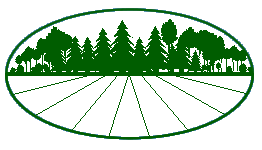Woodlot Association of Alberta
c/o Olson Office Management
P.O. Box 303
Beaverlodge, AB
T0H 0C0

Woodlot Association of Alberta
c/o Olson Office Management
P.O. Box 303
Beaverlodge, AB
T0H 0C0
Shelterwood cutting promotes natural regeneration of desired species through the provision of seed and shelter by an overstory.
Three types of shelterwood cutting are practiced in Nova Scotia:
Uniform Shelterwood
The first step in the uniform shelterwood method involves uniformly thinning the entire stand, allowing more sunlight to reach the forest floor and encouraging the establishment of seedlings. Once the desired amount of regeneration is present another thinning takes place, providing more light, water and nutrients. The remaining overstory is removed when the seedlings are well established and firmly rooted.
Strip Shelterwood
The first step in the strip shelterwood method is harvesting narrow strips and uniformly thinning the uncut strips in between. The next steps are the same as for the uniform shelterwood method.
Seed Tree Shelterwood
The seed tree shelterwood method leaves only selected seed trees standing as individuals and/or in groups. These trees may be harvested after the desired amount of regeneration is present.
Resources